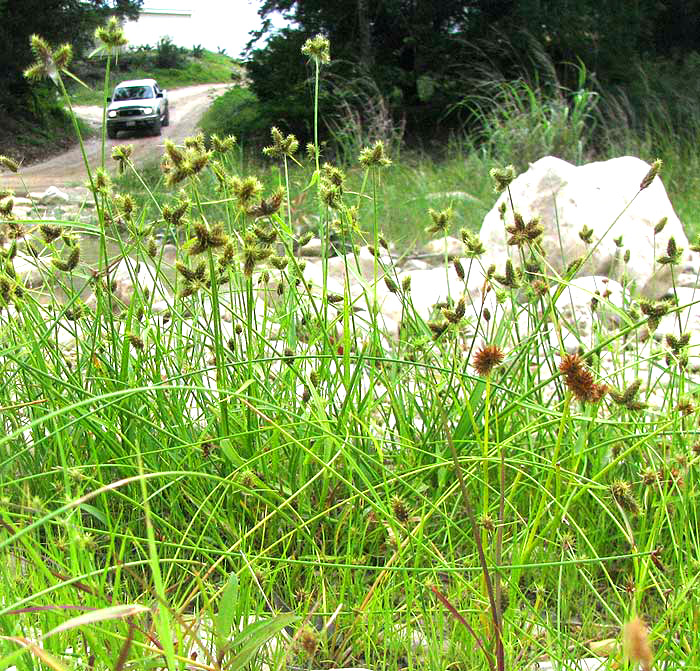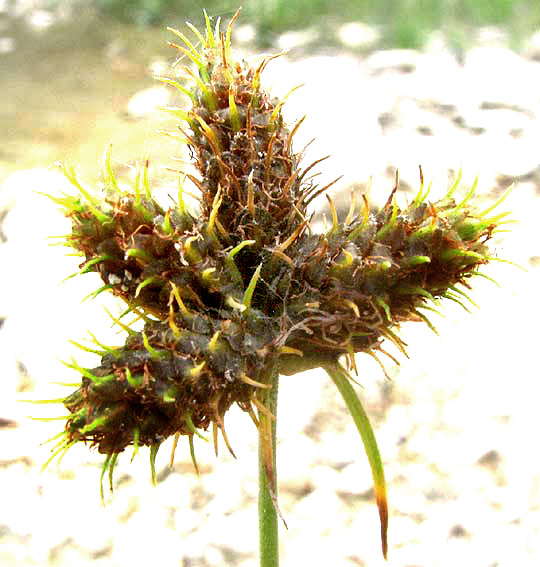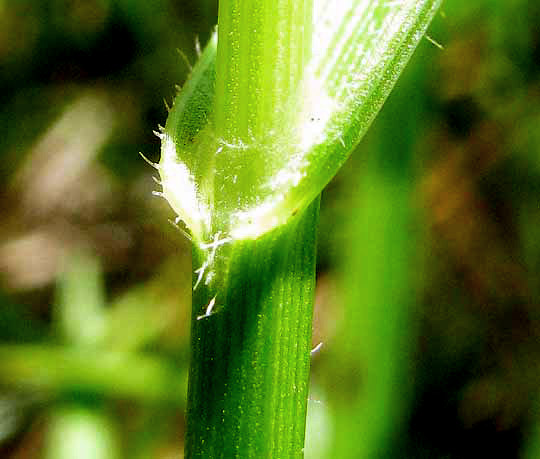Excerpts from Jim Conrad's
Naturalist Newsletter

from the June 30, 2013 Newsletter issued from the Frio Canyon Nature Education Center in the valley of the Dry Frio River in northern Uvalde County, southwestern Texas, on the southern border of the Edwards Plateau; elevation ~1750m (~5750 ft); N29.62°, W99.86°; USA
WESTERN UMBRELLA-SEDGE
Beside the community's low-water ford across the little Dry Frio River a tub-size population of an unusual Sedge Family member caught my eye, shown above. A close-up of a fruiting head appears below:

At first I thought the plant belonged to that huge and diverse group of monocotyledonous, grass-like plants known as sedges, genus Carex. However, the achene-type fruits of Carex develop inside baglike "perigynia," but when I crumbled this plant's head in the palm of my hand instead of seeing achenes inside perigynia I found naked achenes with slender bristles arising at their bases, as in the Sedge Family group known as the spike rushes, genus Eleocharis. But spike rushes produce just one flower head atop each slender stem, and you've seen that these plants bear several. This plant was something I hadn't seen...
It turns out that the plant belongs to the Sedge Family genus Fuirena, a genus that's new to me. Our plant is the Western Umbrella Sedge, FUIRENA SIMPLEX, a mostly tropical plant occurring from northern South America up through the Caribbean Area, Central America and Mexico into the US south-central states as far north as Nebraska.
As a group, members of the genus Fuirena are referred to as umbrella-grasses. That's unfortunate because they're not grasses -- not members of the Grass Family. Also, another much better known group of Sedge Family species, genus Cyperus, also are called umbrella-grasses. Fuirena is such an obscure group of plants that no good common name has arisen for them.
In Texas several species of umbrella-grass occur. Maybe the best field mark distinguishing our plant is that the cylinder around the stem formed below where the leaf attaches to the stem (the sheath) isn't hairy like sheathes on the other species. Below you can see one of our plant's nearly hairless sheaths:

Of what use is such an obscure, little-known plant?
The main activity of the Universe shows itself to be an evolution toward ever greater diversity and sophistication based on interrelatedness of parts. The Western Umbrella Sedge contributes to that diversity, and helps maintain the Dry Frio ecosystem's sophisticated interrelatedness just by being, by photosynthesizing and issuing oxygen for us all, and by producing little pink achene-type fruits which this or that bird sometime later will be very happy to eat.